
| Return |
| • November 30 - Sunday market, part 2 - I have presented a photograph of the autumn night sky earlier. It was taken by an old camera lens picked up at the Sunday market in town. About a month later, while browsing the Sunday market again, I came across a curious object among antiques displayed under a tent. This market with a long tradition is a place where you find unexpected items. Apart from fresh produce and foodstuffs direct from farmers, you will see small bowls and antiques. In old days they used to display many dubious but unusual items, though you can't see many these days. For example, a large steering wheel and a brass propeller from a boat; shells fired by the Japanese army when they attacked Lushun, Manchuria during the Russo-Japanese War (1904-05); A hat worn by Russian general Stessel at the time of meeting (1905) with General Nogi as well as a shakuhachi flute favored by General Nogi in his later years, and so on. They looked genuine but logically could not be. And they were unbelievably cheap! While browsing, you would run into an old classmate and reminisce about the younger days. This will be only possible at a place like the Sunday market. What do you think was the antique I found at the market? To explain it we have to go half a century back.... |
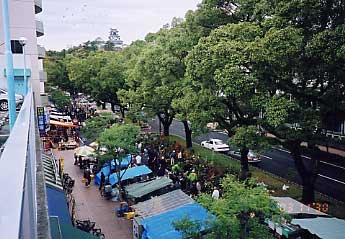 Sunday market Kochi Castle is seen at the back. 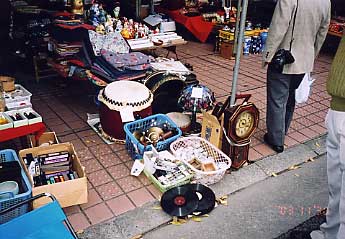 Fewer antiques are displayed. 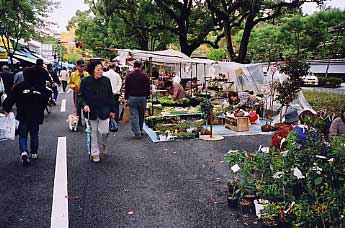 Vegetables and pot plants are popular 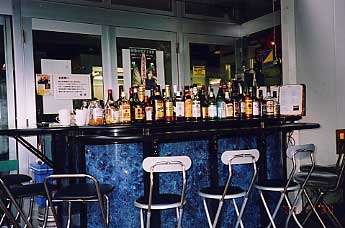 A temporary bar at the corner of the market The signage at the back reads "a jug of draft beer 500 yen". |
|
• November 29 - Mirage, part 2 - The warm autumn has just come to an end and temperatures have begun to fall with the approaching winter. It is still quite comfortable in the observatory dome, as the temperature there does not fall below 10°C. I shot an autumn sky using a bargain 2000-yen camera lens, which I had picked up at a Sunday market in town. It must have been a superb optic. The star image is quite sharp even to the edges of the wide-angle field. Who was the owner of this lens? One day this lens may capture a great comet of the century. |
 At 3.00 am on October 25, 2003 Takumar 24mm f/3.5 A 30-minute exposure on TM400 film |
| • November 20 I received a letter form Mr. Seiji Mochizuki from Hachioji City, who was a former employee of Goto Optical Company and designed Geisei's 60cm reflector. His name has been submitted to IAU for the naming of the Minor Planet (21089) and he built an observatory on the southern slope of Mt. Yatsugatake to celebrate the occasion. The photograph shows his 25cm Schmidt-Cassegrain (Meade) in a 2.3m dome with a computer-aided positioning system. Mr. Mochizuki is very fond of the own-designed 60cm reflector and thinks it significant that a star is named after the designer of the telescope which discovered it. Both of us hope that the telescope is fully utilized for discovery and education for many years to come. When Geisei succeeded in retrieving Halley's Comet first in Japan in September 1984, Mr. Saizo Goto, I remember, smiled and said that the discovery made him feel rewarded by his gift to Kochi Prefecture. |
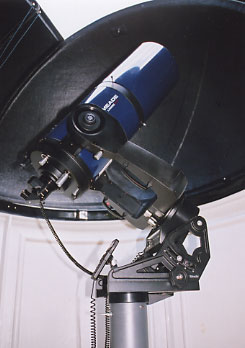 Mr. Seiji Mochizuki's telescope |
|
• November 18 Warm September-like weather has been continuing into November. In the northern sky cumulonimbus, reminiscent of summer, is bubbling and on some nights I turned on an air-conditioner while driving to the observatory. The Leonid meteor shower on the 18th is drawing near. Around that time, C/2003 T3 (Tabur), which was discovered in the southern hemisphere, may appear over the ocean in the evening sky. This photograph was taken from the window of my house looking to the northwestern sky. |
 |
Copyright (C) 2003 Tsutomu Seki.